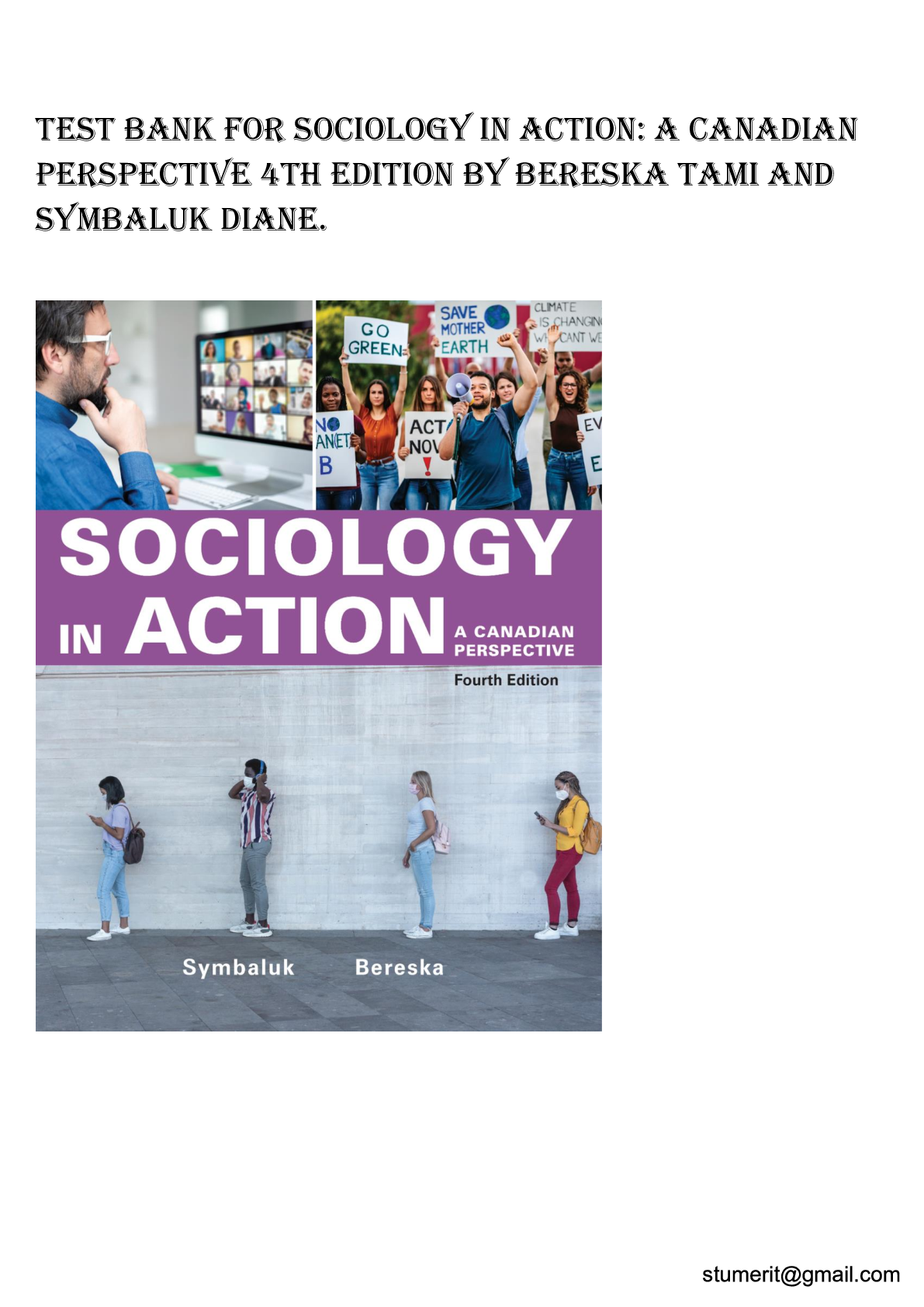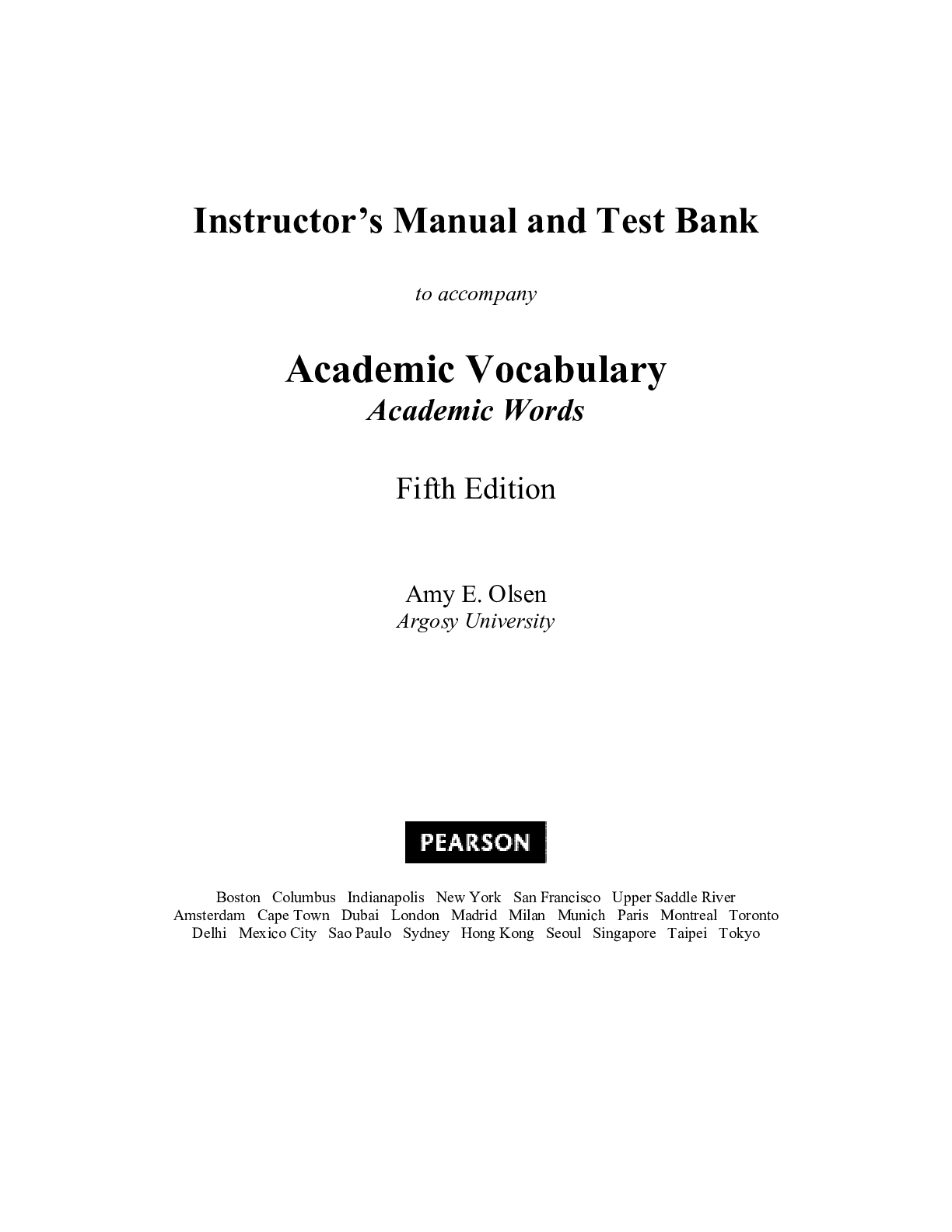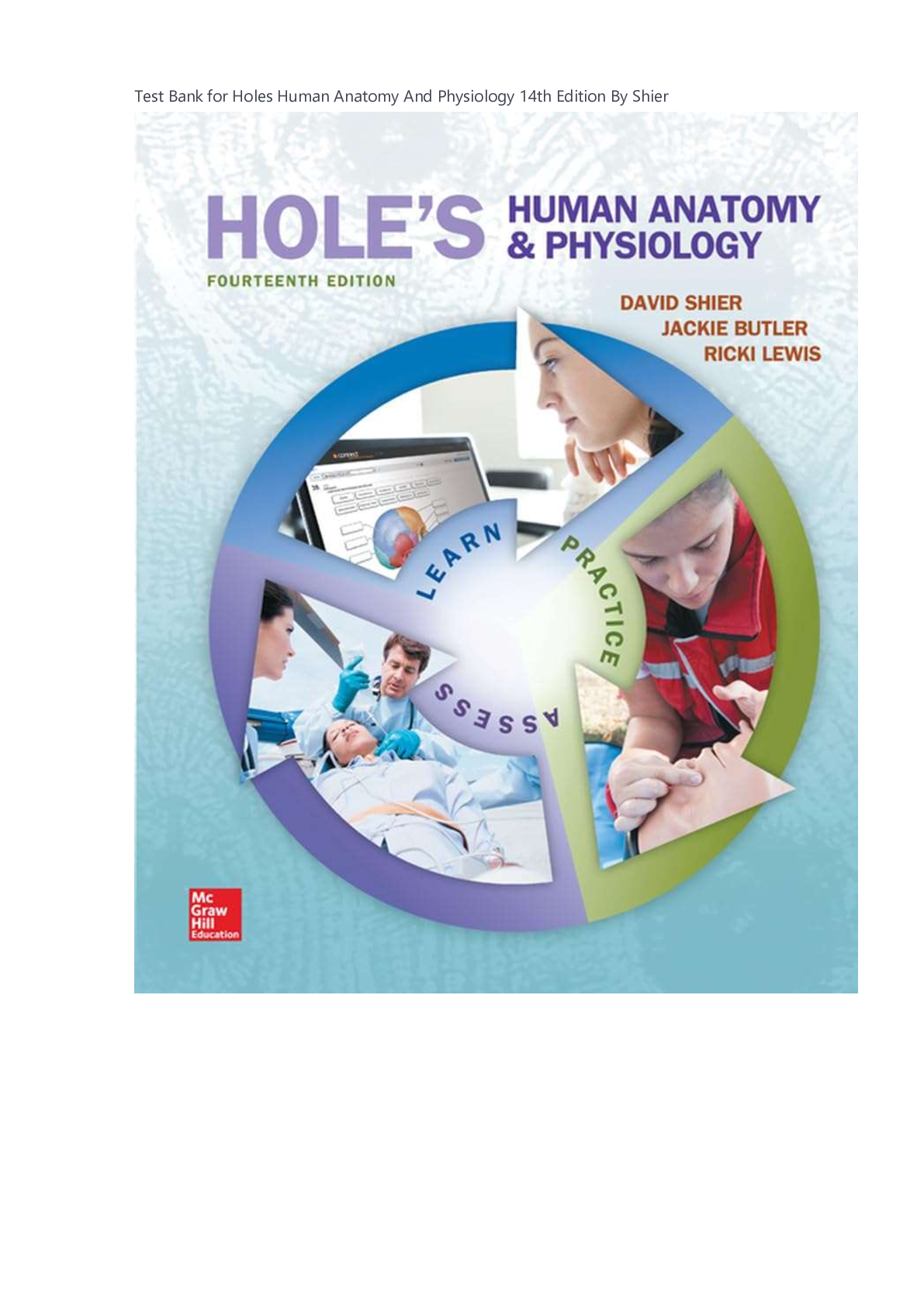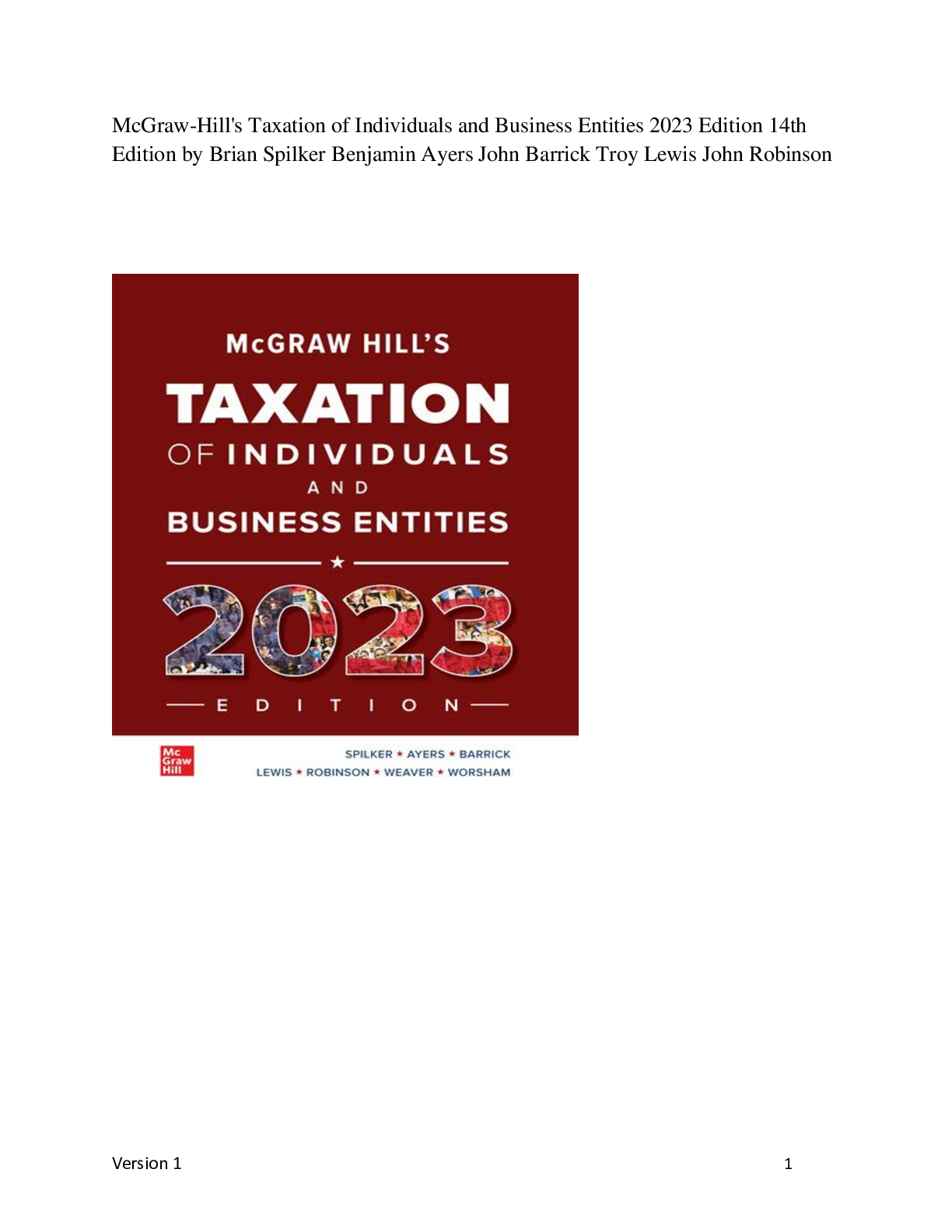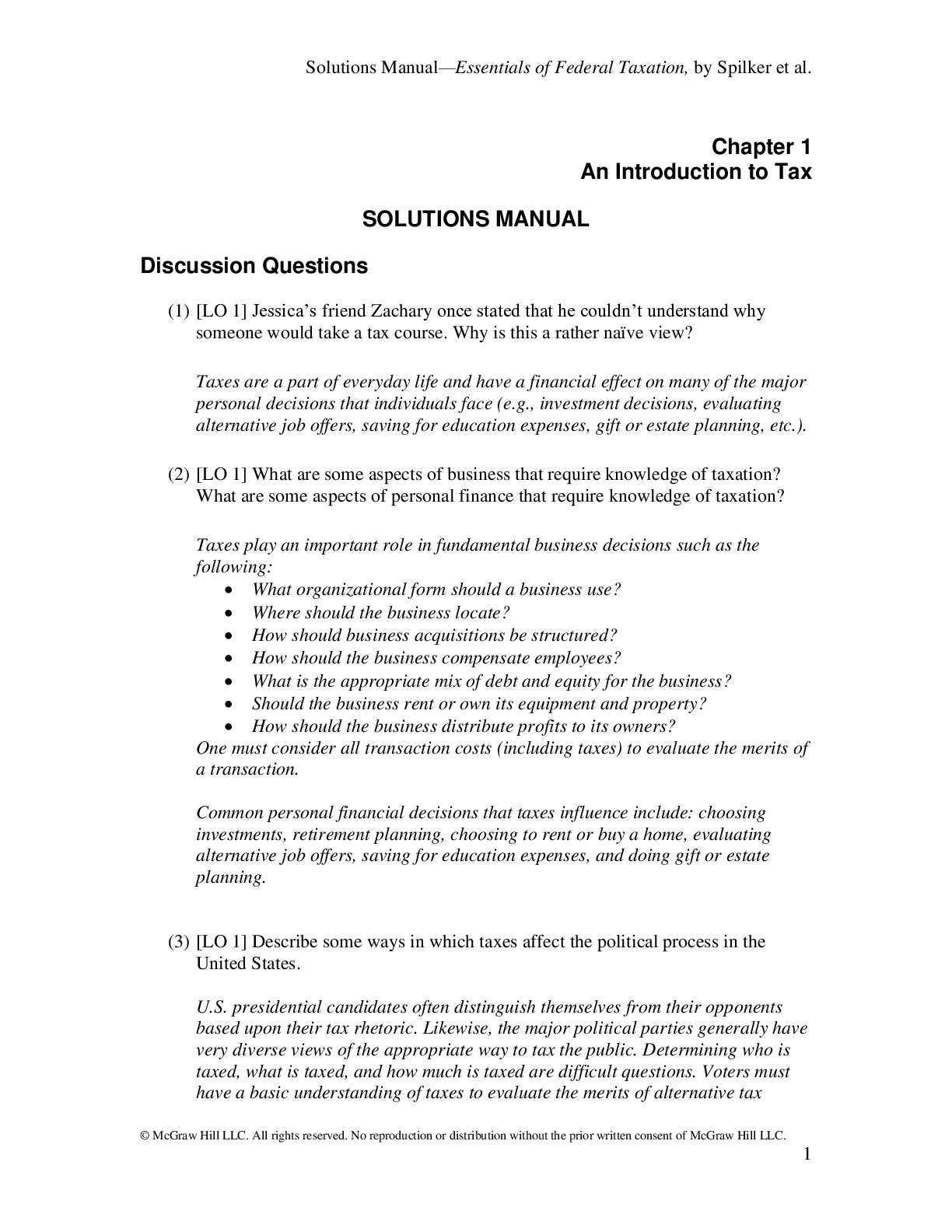*NURSING > TEST BANK > Test Bank for Lewis's Medical-Surgical Nursing in Canada 5th Edition By Jeffrey (All)
Test Bank for Lewis's Medical-Surgical Nursing in Canada 5th Edition By Jeffrey
Document Content and Description Below
Chapter 01: Introduction to Medical-Surgical Nursing Practice in Canada Tyerman: Lewis’s Medical-Surgical Nursing in Canada, 5th Edition MULTIPLE CHOICE 1. The nurse is caring for a patient with ... a new diagnosis of pneumonia and explains to the patient that together they will plan the patient’s care and set goals for discharge. The patient asks, “How is that different from what the doctor does?” Which response by the nurse is most appropriate? a. “The role of the nurse is to administer medications and other treatments prescribed by your doctor.” b. “The nurse’s job is to help the doctor by collecting data and communicating when there are problems.” c. “Nurses perform many of the procedures done by physicians, but nurses are here in the hospital for a longer time than doctors.” d. “In addition to caring for you while you are sick, the nurses will assist you to develop an individualized plan to maintain your health.” ANS: D This response is consistent with the Canadian Nurses Association (CNA) definition of nursing. Registered nurses are self-regulated health care professionals who work autonomously and in collaboration with others. RNs enable individuals, families, groups, communities and populations to achieve their optimal level of health. RNs coordinate health care, deliver direct services, and support patients in their self-care decisions and actions in situations of health, illness, injury, and disability in all stages of life. The other responses describe some of the dependent and collaborative functions of the nursing role but do not accurately describe the nurse’s role in the health care system. DIF: Cognitive Level: Comprehension TOP: Nursing Process: Implementation MSC: NCLEX: Safe and Effective Care Environment 2. When caring for patients using evidence-informed practice, which of the following does the nurse use? a. Clinical judgement based on experience b. Evidence from a clinical research study c. The best available evidence to guide clinical expertise d. Evaluation of data showing that the patient outcomes are met ANS: C Evidence-informed nursing practice is a continuous interactive process involving the explicit, conscientious, and judicious consideration of the best available evidence to provide care. Four primary elements are: (a) clinical state, setting, and circumstances; (b) patient preferences and actions; (c) best research evidence, and (d) health care resources. Clinical judgement based on the nurse’s clinical experience is part of EIP, but clinical decision making also should incorporate current research and research-based guidelines. Evidence from one clinical research study does not provide an a [Show More]
Last updated: 6 months ago
Preview 5 out of 1232 pages

Loading document previews ...
Buy this document to get the full access instantly
Instant Download Access after purchase
Buy NowInstant download
We Accept:

Reviews( 0 )
$29.50
Can't find what you want? Try our AI powered Search
Document information
Connected school, study & course
About the document
Uploaded On
Dec 14, 2024
Number of pages
1232
Written in
Additional information
This document has been written for:
Uploaded
Dec 14, 2024
Downloads
0
Views
14



